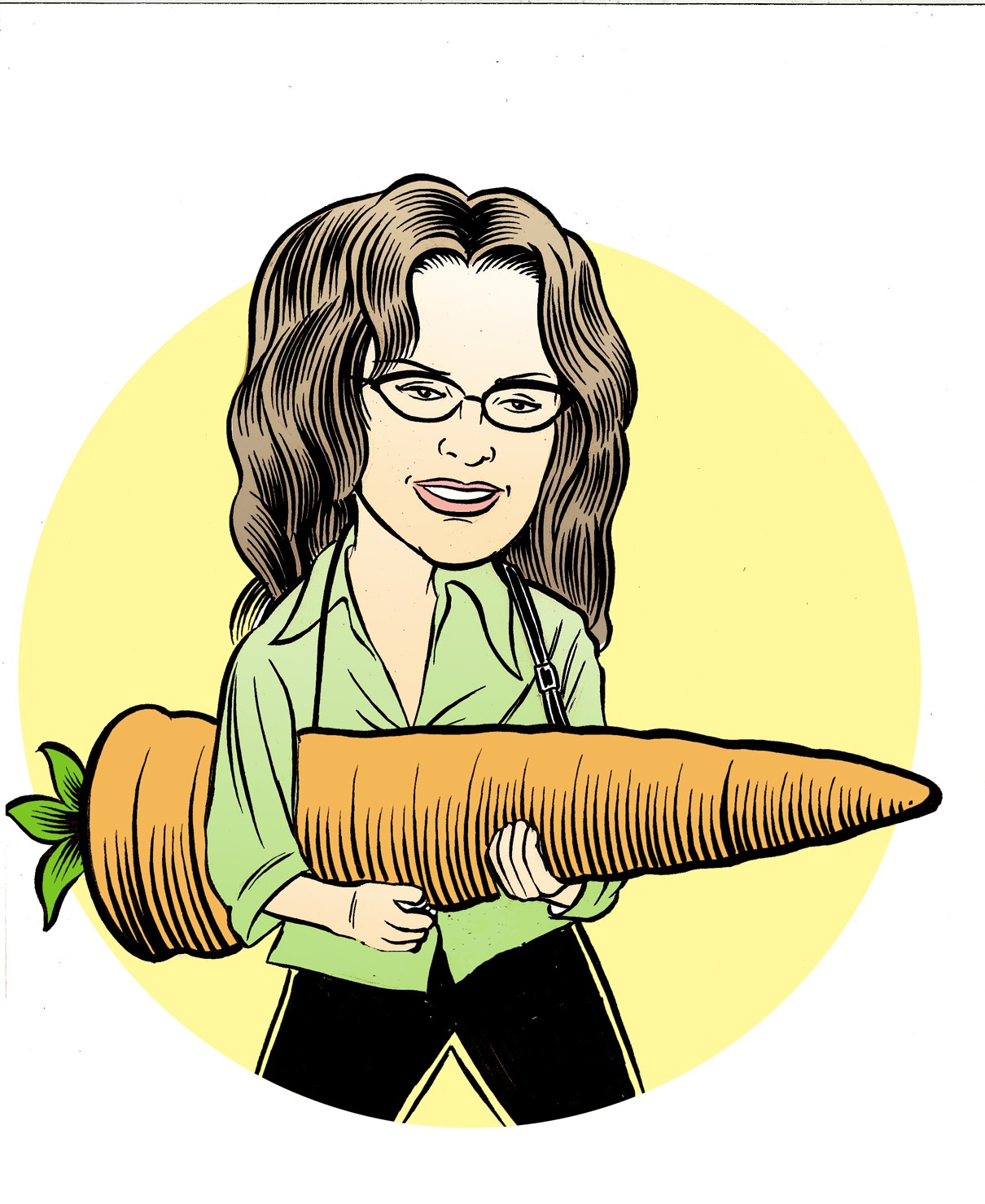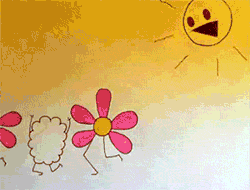 BY ELIZABETH FIEND The first time I ate flowers, they were served to me by a man who just moments before had uttered the command: “Don’t smoke in this room, this is where we make our bombs.” He then pointed out the window, where on an overhanging roof rung with barbed wire I spied rows and rows of Molotov cocktails, finely crafted in Heineken bottles. The bombs were needed in case the police came a-knockin’. Or as I found out first hand, several hours later, when they don’t knock. The cops actually come a-bangin’, with a battering-ram. And they dress in full riot gear — shields, helmets, batons.
BY ELIZABETH FIEND The first time I ate flowers, they were served to me by a man who just moments before had uttered the command: “Don’t smoke in this room, this is where we make our bombs.” He then pointed out the window, where on an overhanging roof rung with barbed wire I spied rows and rows of Molotov cocktails, finely crafted in Heineken bottles. The bombs were needed in case the police came a-knockin’. Or as I found out first hand, several hours later, when they don’t knock. The cops actually come a-bangin’, with a battering-ram. And they dress in full riot gear — shields, helmets, batons.
Welcome to the world of European squats.
Later that night, while I was performing there with my band More Fiends, I told the crowd that this would be our last song. I looked down and a second later when I looked up, the room was totally deserted.
Huh, I thought some weird Danish custom? Nope, the place was under attack by the politi and everyone had fled upstairs to their defensive positions.
No Molotov cocktails were thrown that night. Instead, they activated Plan B, the lobbing of fist-sized chunks of asphalt via sling-shots — the super industrial kind that are sold for “hunting.” The asphalt chunks were kept in cascading mounds in each corner of a room that was down the hall from the bomb making room. Helmets with face masks were hung on hooks down one wall, the sling-shots on the other.
You could smoke in that room, no problem.
While my bandmates and I stood alone in the back hallway watching the double doors bend inwards with each assault of the police battering ram, some moments of uncertainty passed. What should we do? But I did know one thing for sure, edible flowers would have a place in my future.
one thing for sure, edible flowers would have a place in my future.
Pansies, roses, calendula, squash flowers, anise hyssop, day lilies, bee balm, marigolds, carnations, sunflower buds, the flowers from most herbs and Thomas Jefferson’s favorite flower, from the hyacinth bean, are all edible.
Luckily, most edible flowers are easy to grow. As an added bonus, many are classified as herbs and have medicinal qualities. In fact many of these herbs, such as basil, have turned out to be super foods — possessing unique power to keep you healthy at the cellular level.
Edible flowers will shine as an amazingly colorful addition to a dish by transforming the ordinary into the sublime. I always feel like a fairy princess when I eat a salad laden with colorful petals — yellow and orange calendula, purple Johnny jump-ups — all intermingling with the emerald and kelly greens of mixed lettuce.
The globe-shaped flower heads of perennial chive are visually stunning when broken up and tossed with cooked brown rice. Each bite a tiny purple, succulent burst of garlic. Not overpowering, just empowering — to the proud hostess that is. You can also pick the flower heads when they begin to form their seed pods, when the pods are still green, to use like capers.
Sunflowers aren’t just for the birds, although that’s a great bonus. You can steam the immature flower buds and serve them as you would artichokes.
Roses, ah, the Queen of edible flowers! Rose flavor is common in Indian cuisine, but quite exotic to the American palate. My favorite contribution to the summer pot-luck barbeque is Rose Petal Ricotta. So easy, so dreamy, so impressive, you really just have to say the name and everyone is clamoring for a taste. Your friends will think you’ve slaved for hours making this elegant spread, but in fact all you have to do is slice a rose bud into concentric circles — making rose confetti — and then gently stir the rose confetti into ricotta cheese. The best ricotta is the kind you buy fresh at the Italian Market. Serve on whole grain crackers and sit back and enjoy the oohs and aahhhs.
The purple spires of anise hyssop have the most pure anise flavor I’ve ever tasted, and are perfect for baking into shortbread or adding to iced tea. Anise hyssop is an anti-viral, promotes sweating and is used for fever and heatstroke. North American First Nations people use it as a breath-freshener, as a tea and as a sweetener. In China it’s used for headache and angina.
Some flowers will not only add color and flavor but texture as well. Hyacinth bean flowers, for example, have the crunch and taste of a radish but they look like miniature orchids. So lovely. And some flowers, especially those of herbs, will add exceptional taste even when dried. Pinkish-purple sage flowers, balancing on buoyant stems shooting above the silvery green of sage leaves, should be cut just before their peak, dusted off, hung upside down and left to dry in a clean area away from direct sun light. Used when dried, they are deep with flavor, the flavor is at once familiar, yet impossible for the uninitiated to name as the source.
And tea — what great tea these flowers make! Sage flower tea is delicious and healing, capable of soothing even the most painful sore throat. The generic name for sage, Salvia, comes from the Latin word meaning “to heal” or “savior.” Around the 10th century, Arab physicians believed sage extended life to the point of immortality. After the Crusades, the saying “Why should a man die who grows sage in his garden?” became popular in Europe. Charlemagne ordered sage grown in the medicinal herb gardens on his imperial farms, and the French called the herb toute bonne, meaning “all’s well.” Sage is also an immune system stimulant and makes a good digestive remedy. According to Flower Essence Lore (yes, there is such a thing!) sage flower essence enables the Self to learn and reflect about life, particularly enhancing the capacity to experience deep inner peace and wisdom.
The Oswego Indians of western New York made tea from the dried aromatic leaves of monarda (aka bee balm, bergamot, Jersey or Oswego Tea), and shared their fondness for it with colonial settlers who embraced it when imported tea became scarce after that other Tea Party, up in Boston. One colonist, John Bartram of West Philadelphia, was so enamored by the plant he sent seeds back to England. I grow several types of bee balm and make a tea blend using the leaves and flowers from the varieties Purple Petite and the red flowered Monarda didyma “Adam.” Delicious iced or hot.
The Shakers used monarda tea to treat colds and sore throats. Native Americans used it for colic, gas, colds, fevers, stomachaches, nosebleeds, insomnia, heart trouble, measles, and to induce sweating. Oswego tea contains the aromatic antiseptic thymol, which is widely used as a breath freshener by dentists and modern medical practitioners.
Never eat flowers you find along the road as they may have been sprayed with pesticides. Don’t eat flowers from florists, it’s a pretty sure bet these have also been treated with chemicals. The safest flowers you can eat are the ones you grow yourself.
Raise up some edible flowers, make your own tea blends, impress your dining companions with stunningly beautiful presentations and unique dishes. But get on the ball, because the time is NOW to order your plants or seeds for the coming spring and summer. In my experience, it’s a crap shoot as to which nursery to purchase from. Price doesn’t always matter either. But an important aspect of gardening is to know your local. Check the zone and conditions in which the plant can flourish and pay attention to the plants — all summer. Don’t try to tame nature to your will.
Feel free to post your questions about growing edible flowers here and check back later in the summer for more uses and recipes for these floral gems.
ABOUT THE AUTHOR: Elizabeth Fiend is Philadelphia’s Beloved Revolutionary Sweetheart. Most people don’t know it yet, but that will change. Miss Fiend is host of the Big Tea Party. But enough of my yackin’, here’s Elizabeth with the 411 on her column: “Most people don’t think about the fact that science doesn’t determine our government’s regulations and recommendations for health and the environment, its sleazy politicking and backroom lobbying that makes the rules and I would like to bring this fact more to the forefront,” she says. “My philosophy is decidedly anti-big business/governmental lobbying but in line with the science of (my idol, ok crush) Dr. Walter Willett, Harvard University School of Public Health. There’s an edge to it, but it’s not goofy new age-y stuff with no basis in fact. And besides all that, I am the most fun of all the health advocates. I’m the only one who consistently wears pink and is brewing absinthe in her kitchen (excuse me, that’s illegal, infusing absinthe).” Word.
